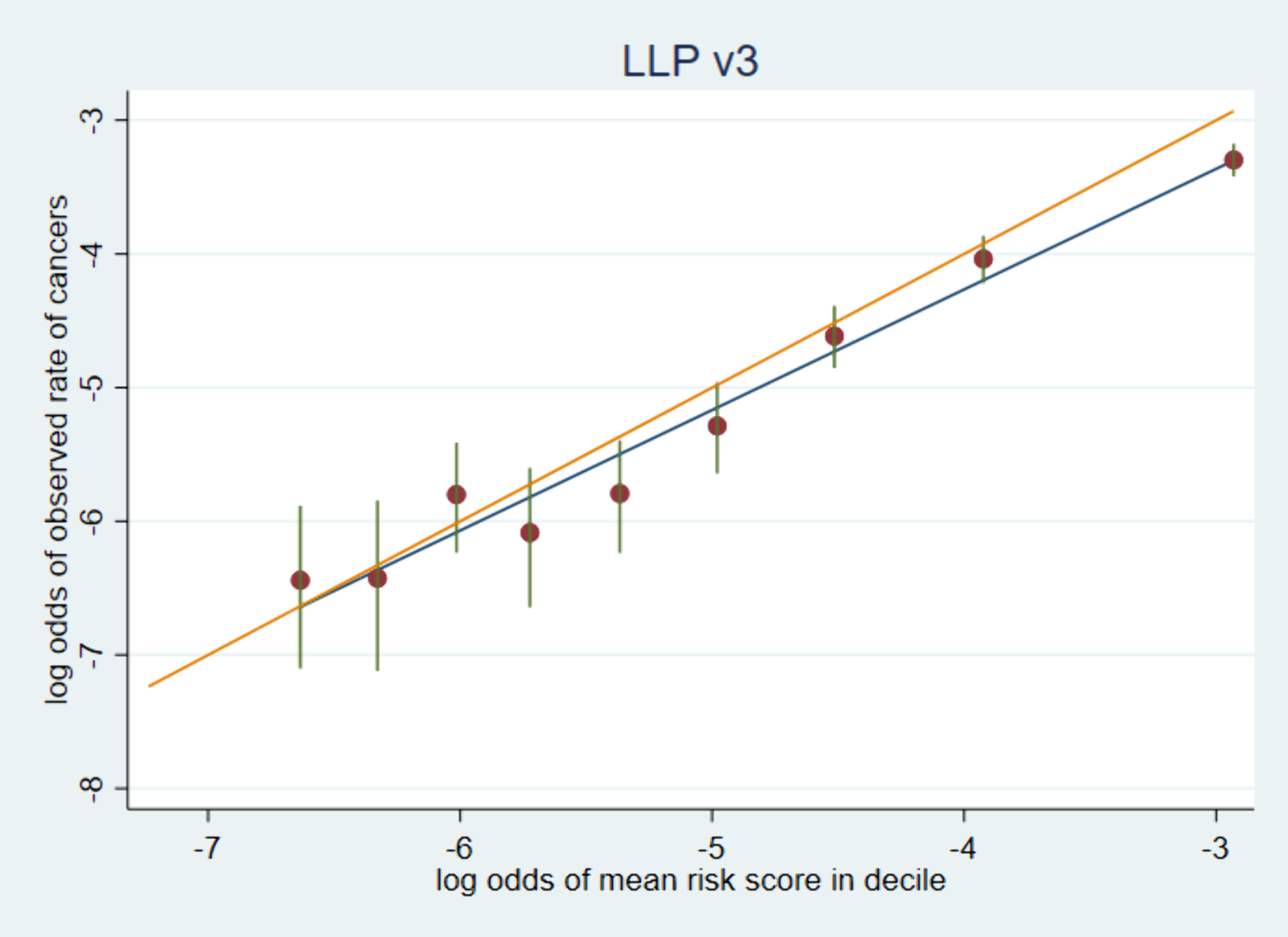Virtual Library
Start Your Search
Stephen W. Duffy
Author of
-
+
FP09 - Screening and Early Detection (ID 175)
- Event: WCLC 2020
- Type: Posters (Featured)
- Track: Screening and Early Detection
- Presentations: 1
- Moderators:
- Coordinates: 1/28/2021, 00:00 - 00:00, ePoster Hall
-
+
FP09.02 - Calibration of the LLP Lung Cancer Risk Stratification Model: Prospective Validation in the UKLS Cohort of 76,000 People (ID 3137)
00:00 - 00:00 | Author(s): Stephen W. Duffy
- Abstract
- Presentation
Introduction
Introduction: Evidence from two large randomised trials estimates a significant 20% -24% reduction in lung cancer mortality in the low dose CT screening arm.
Future lung cancer screening programmes require identification of high-risk populations to optimise detection in those who would benefit from screening for lung cancer and provide a cost-effective programme. The Liverpool Lung Project risk model (LLPv1) was first developed in 2008, validated in three international datasets in 2012 and amended in the UKLS trial (LLPv2). We report on further amendments to the model (LLPv3), where it is calibrated to the whole of England and more recent lung cancer incidence data.
Methods
75,958 participants responded to the first approach UKLS trial questionnaire. We obtained cancer registration data from Public Health England, linked through a third party, providing at least 5 years of follow-up data. A ROC curve was plotted to assess ability of the LLP model to distinguish between those individuals who went on to develop lung cancer. In order to assess the calibration of the predictive model, we ranked the LLPv3 risk scores, assigned decile groups, and carried out a linear regression of the log-odds () of the rate of observed cancers in each group against the log-odds of the mean of the risk scores in the group (See Figure1).
Results
The ROC curves for LLPv2 and LLPv3 are almost identical, as would be expected, since the coefficients pertaining to the risk factors are the same; ranking of most individuals is unchanged from LLPv2 to LLPv3, thus, the discrimination is very similar. The AUC in each case was 0.81 (95% CI 0.79 - 0.82). After excluding individuals allocated to the UKLS trial intervention arm, the AUC and 95% confidence interval were also unchanged.
The LLPv3 model also provided a very good estimation of future risk through comparison of observed and expected lung cancer outcomes. However, without the calibration to the current England population in terms of age and sex specific lung cancer risk, there would have been considerable overestimation of risk. This is consistent with the findings of Katki et al. [Ann Intern Med 2018;169(1):10-19], who concluded that previous versions of the LLP model overestimated future incidence.
Conclusion
The discrimination of LLPv2 and LLPv3 was excellent. LLPv3, which was calibrated to contemporary, English incidence, achieved more accurate prediction of absolute incidence, and would be more effective in selecting a high-risk group for surveillance in England today.
Only Members that have purchased this event or have registered via an access code will be able to view this content. To view this presentation, please login, select "Add to Cart" and proceed to checkout. If you would like to become a member of IASLC, please click here.


